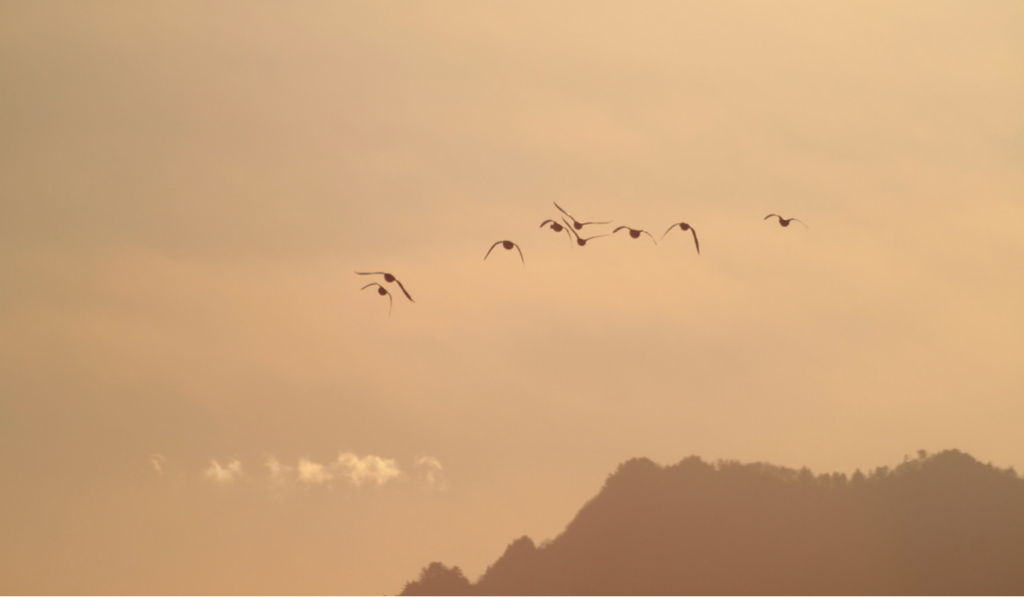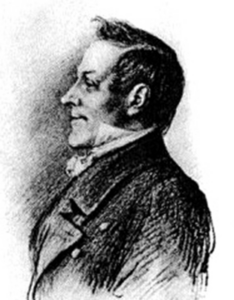Longing
(Poet's title: Sehnsucht)
Set by Schubert:
D 516
[probably 1816]
Der Lerche wolkennahe Lieder
Erschmettern zu des Winters Flucht,
Die Erde hüllt in Sammt die Glieder,
Und Blüten bilden rote Frucht.
Nur du, o sturmbewegte Seele,
Nur du bist blütenlos, in dich gekehrt,
Und wirst in goldner Frühlingshelle
Von tiefer Sehnsucht aufgezehrt!
Nie wird, was du verlangst, entkeimen
Dem Boden, Idealen fremd,
Der trotzig deinen schönsten Träumen
Die rohe Kraft entgegen stemmt;
Du ringst dich matt, mit seiner Härte,
Vom Wunsche heftiger entbrannt;
Mit Kranichen ein strebende Gefährte,
Zu wandern in ein milder Land.
The songs of the lark, up near the clouds,
Ring out as winter flees.
The earth covers its limbs in velvet
And blossoms form red fruit.
Only you, storm-tossed soul,
Only you do not blossom. You are turned in on yourself,
And in the golden brightness of spring
You are sucked dry by deep longing.
What you crave will never germinate in
This soil, a stranger to ideals,
Which, despite your most beautiful dreams,
Sets its raw strength up against you.
You exhaust yourself battling against its toughness,
Fired up with the burning desire
To set off as a striving companion with the cranes
And to migrate to a kinder country.
All translations into English that appear on this website, unless otherwise stated, are by Malcolm Wren. You are free to use them on condition that you acknowledge Malcolm Wren as the translator and schubertsong.uk as the source. Unless otherwise stated, the comments and essays that appear after the texts and translations are by Malcolm Wren and are © Copyright.
☙
Themes and images in this text:
Birds Clouds Covers and covering Dreams The earth Fire Fleeing Flowers Fruit Germination, shoots and sprouting Gold High, low and deep Larks Limbs Longing and yearning Red and purple Seeds Soul Storms Spring (season) Strangers Velvet Walking and wandering Winter
We start with bird song (larks) and end with bird migration (cranes), yet many of the images in this text are more rooted in the earth. As winter gives way to spring, the earth wraps itself in velvet and blossoms promise fruit at a later point.
This is one of those texts about spring in which the human subject feels excluded from what is going on. There is no corresponding bloom in this speaker’s soul. Where the rest of nature is looking outwards this soul is turned in on itself and is being sucked dry by deep longing. It is as if this longing is the direct opposite of the abundance of spring.
The seeds in this soul can never germinate in soil like this. This type of soil is actively antagonistic to all you long for. It has a tough, resistant strength which only encourages your determination to go off to find a less harsh environment, ‘ein milder Land’.
Are there perhaps too many layers of imagery here? Or do the different metaphors help the reader to perceive the writer’s difficulty in communicating the nature of the problem? We have no objections to poets using different images in different poems to express basically the same experience, so why should not they have a go at connecting them in the hope that possibly conflicting images will complement each other?
Mayrhofer has attempted to bring together some standard themes:
- the contrast between the energy of spring in nature, and the lack of inner dynamism in the soul
- the desire to move or to get away from a limiting environment (with the verb ‘wandern’ here meaning something like ‘to migrate’)
- the image of ‘land’, ‘earth’ and ‘soil’ and the problem of rootlessness
- birds as images of escape, causing both envy (of the larks’ joy) and sympathy (with the cranes’ desire to leave)
- blossom as an image of a productive process leading to fruition, in contrast to my inability to flourish
- seeds as a dual image of stagnation and promise
- strength and hardness contrasted with what is imagined to be a more gentle world.
None of the images on their own convey enough of the frustration Mayrhofer is wanting to express, but together they tell us something about the poet’s belief that the problem is more to do with the environment than his response to it. He does not see it as the seed’s fault that it cannot germinate here; it is simply the wrong sort of seed and needs to be planted elsewhere. The roughness and rawness are not accepted as potentially useful to help us grow (as in more moralistic texts); it seems self-evident that our longing to move away to a kinder land[1] is the appropriate response.
[1] It would be interesting to know what evidence Mayrhofer had that cranes did indeed migrate to a warmer climate for part of the year. It was only in a few years later (in 1822) that north Europeans found the first incontrovertible sign of long-distance migration, when a white stork which was shot down was found to have survived a previous arrow throw. The arrow that was already stuck in it had clearly been made and thrown in Africa. https://en.wikipedia.org/wiki/Pfeilstorch

Photo: Patricia Dillard Eguchi
☙
Original Spelling and notes on the text Sehnsucht Der Lerche wolkennahe Lieder Erschmettern zu des Winters Flucht. Die Erde hüllt in Sammt die Glieder, Und Blüthen bilden rothe Frucht. Nur du, o sturmbewegte Seele, Nur du bist1 blüthenlos, in dich gekehrt, Und wirst in goldner Frühlingshelle Von tiefer Sehnsucht aufgezehrt. Nie wird, was du verlangst, entkeimen Dem Boden, Idealen fremd; Der trotzig deinen schönsten Träumen Die rohe2 Kraft entgegen stemmt. Du ringst dich matt mit seiner Härte, Vom Wunsche heftiger entbrannt: Mit Kranichen ein strebender3 Gefährte Zu wandern in ein milder Land. 1 Schubert probably added the words 'Nur du' (only you) to this line. When the poem was printed in 1824 the line began with 'Bist' 2 Schubert seems to have changed 'rauhe' (rough) to 'rohe' (raw) (or he may have been working from an earlier draft by the poet) 3 In many old editions a misprint changed 'strebender' (striving) to 'sterbender' (dying).
Confirmed by Peter Rastl with Gedichte von Johann Mayrhofer. Wien. Bey Friedrich Volke. 1824, page 100.
To see an early edition of the text, go to page 100 [114 von 212] here: http://digital.onb.ac.at/OnbViewer/viewer.faces?doc=ABO_%2BZ177450902


